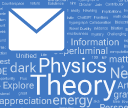I Never Expected This
It’s unexpected, surprising—and for me incredibly exciting. To be fair, at some level I’ve been working towards this for nearly 50 years. But it’s just in the last few months that it’s finally come together. And it’s much more wonderful, and beautiful, than I’d ever imagined.
In many ways it’s the ultimate question in natural science: How does our universe work? Is there a fundamental theory? An incredible amount has been figured out about physics over the past few hundred years. But even with everything that’s been done—and it’s very impressive—we still, after all this time, don’t have a truly fundamental theory of physics.
Back when I used do theoretical physics for a living, I must admit I didn’t think much about trying to find a fundamental theory; I was more concerned about what we could figure out based on the theories we had. And somehow I think I imagined that if there was a fundamental theory, it would inevitably be very complicated. Continue reading










